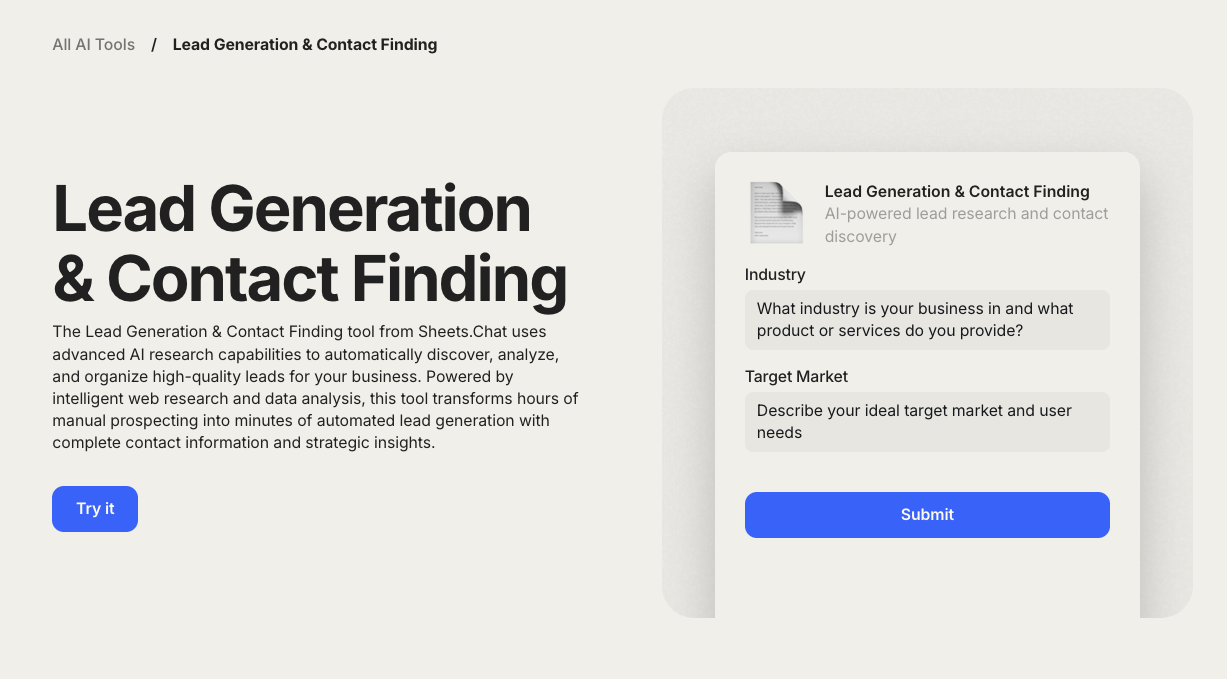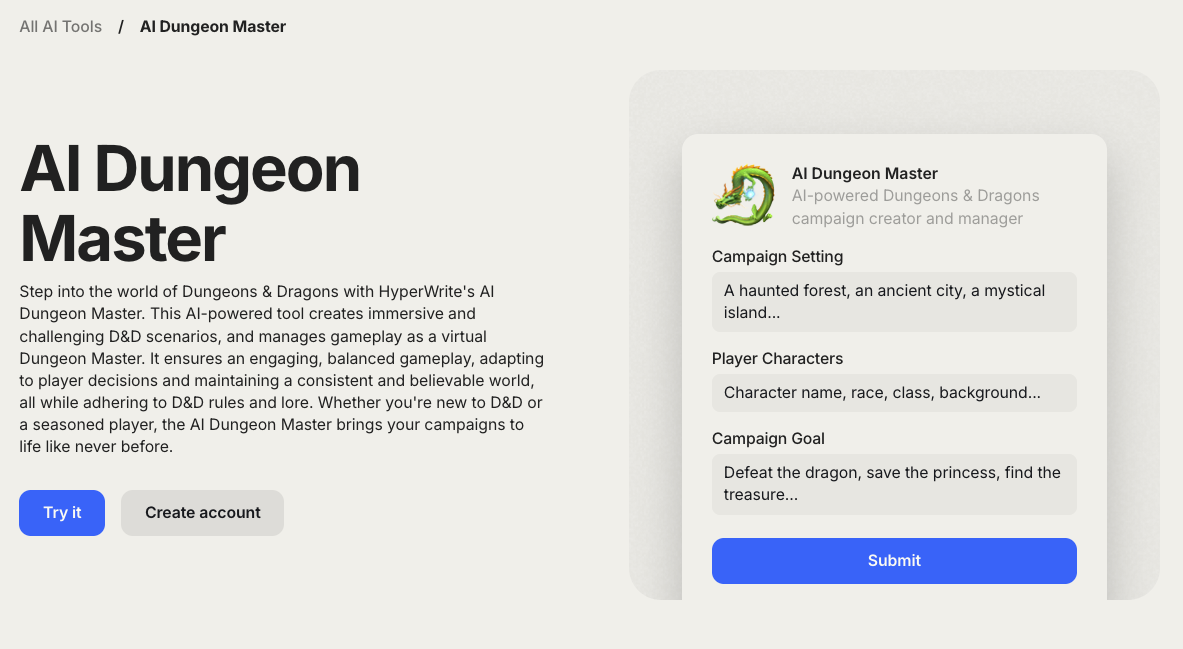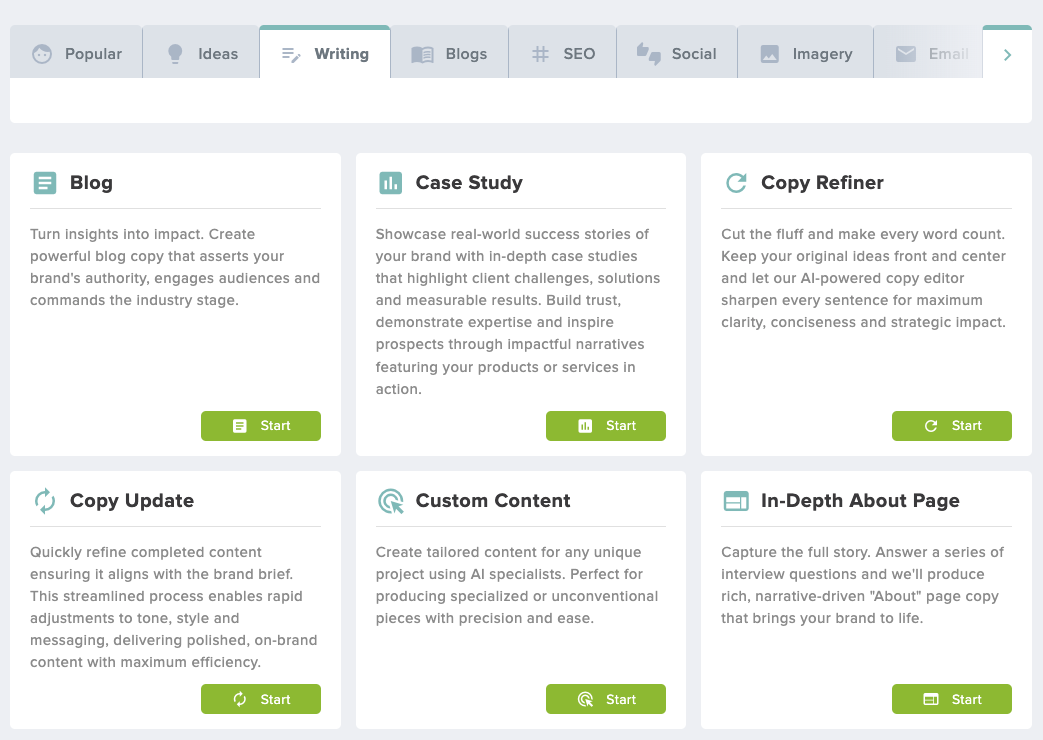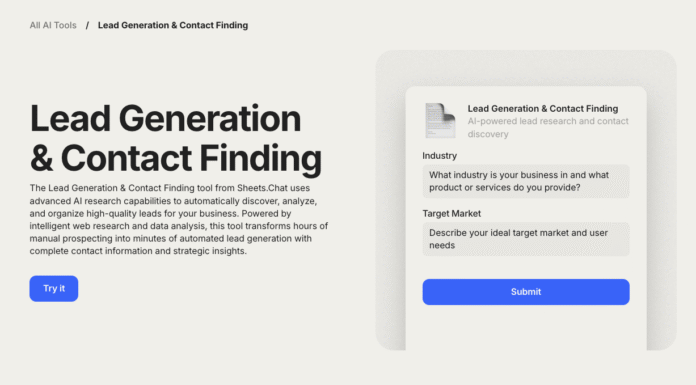Back in the early days of AI writing, your tool choices were about as exciting as the Model T. Sure, they could get you from A to B, but you weren’t exactly spoiled for options. There wasn’t much infrastructure either. If your AI writing assistant didn’t do what you needed, you just shrugged and made do.
Nowadays, the content optimization scene looks more like today’s EV market: dozens of sleek, specialized text generation models, all promising the ride of your life — except you’re never quite sure where they’ll run out of juice and leave you on the side of the road. If you’ve played around with HyperWrite, you’ve already learned that no single AI writer runs smoothly on every road. Let’s find out which HyperWrite alternatives are all torque and no traction, and which ones are built to go the distance.
Understanding HyperWrite: Content Generation Features and Target Audience Challenges
HyperWrite positions itself as the ultimate AI writing Swiss Army knife. And honestly? It’s pretty packed with features.
Subscribe to
The Content Marketer
Get weekly insights, advice and opinions about all things digital marketing.
Thanks for subscribing! Keep an eye out for a Welcome email from us shortly. If you don’t see it come through, check your spam folder and mark the email as “not spam.”
What HyperWrite Actually Offers
Unlike some specialized content creators or creative writing tools, HyperWrite throws everything at the wall to see what sticks. You get basic AI workflows that free ChatGPT versions handle just as well (like “Explain like I’m 5” prompts), sitting awkwardly next to writing assistance workflows that feel oddly specific:
- AI speech writer for your next TED talk dreams.
- Research assistant that hunts down peer-reviewed articles.
- Lead generation tools for prospecting.
- UK legal prose enhancer (because British legal writing style is its own beast).
- AI Dungeon Master Assistant (for when you need to roll for initiative AND quarterly reports).

The document editor tries to be your writing command center with real-time feedback, brainstorming support, rewriting tools, source finding, citation assistance and interactive document chat. Nothing wrong with that, as long as you leave pricing out of the picture.

However, HyperWrite doesn’t offer a free tier. Your only options are:
- Premium: $16/month ($192/year) with 250 AI messages.
- Ultra: $29/month ($348/year) with unlimited messages, 10 custom personas and experimental features (although it’s not clear what those entail).
So it’s not necessarily more expensive than other tools. ChatGPT, which does have a free tier, gives you options from $20/month to ten times that. Your specialized tool of choice may cost more, be it a simple email responder, a plagiarism checker or an AI-powered browser extension. But the price alone shouldn’t guide your decision.
The “Feature First” Problem
Here’s where things get messy. In Crossing the Chasm, Geoffrey Moore explains that early in a technology’s life cycle, “feature lists” and novelty are enough to attract early adopters. But to win over the mainstream, products need to evolve toward clear solutions and well-defined use cases. Translation: Tools need to get from a generic “AI writing process” to “plagiarism check” or a dedicated content marketing workflow to evolve.
Some AI tools have already made that leap: Extrovert generates LinkedIn comments; SurveyMonkey creates surveys based on your prompt; Canva generates graphics. Each is laser-focused on a problem, and their marketing reflects that. Each aims to be “the best AI tool” within its given categories, not just another app that does it all.
HyperWrite, on the other hand, still markets capabilities instead of targeting specific user needs. They’re simultaneously courting marketers, researchers, gamers and legal professionals, among other users. So it’s tough to even say what the best alternative to HyperWrite would look like, because it’d have to cover AI copywriting as well as non-marketing-related tasks. It’s like trying to be the perfect date for everyone on Tinder — you end up being nobody’s ideal match.
This shotgun approach creates a few problems:
- Workflow specialization gets diluted across multiple audiences.
- You’re paying for features you’ll never touch (when’s the last time you needed a D&D assistant for your long-form content?).
- The tool is decent at everything, but hasn’t truly homed in on a niche specialization.
Best fit for HyperWrite: Teams that genuinely need research + rewriting + niche applications in one platform. If you’re still in your AI experimentation phase and find yourself regularly using photo generation, JSON converters and content creation in your daily workflow, HyperWrite might be your unicorn.
Top HyperWrite Alternatives for Different Writing Use Cases
Let’s assume you are no longer enthusiastic about how generative AI can immortalize your wire-haired dachshund in the image of a marble bust with 12 tentacles. Maybe you’re already at the advanced level where you’re getting curious about AI detection tools. So what can we use?
contentmarketing.ai: For Marketing Teams Who Value Their Brand
Best for: Marketing teams that need brand-consistent, high-quality content at scale without playing telephone with freelancers.

contentmarketing.ai gets something fundamental that some tools miss — your brand voice isn’t negotiable. Brafton has built the entire platform around brand brief integration, ensuring your AI-generated content sounds like your company, not like a robot trying to sound human.
Key features that actually matter:
- Brand brief integration that maintains tone and editorial consistency.
- Dedicated workflows for blog posts, case studies, copy refinement, Google E-E-A-T optimization, press releases, one-pagers, SME interviews and more.
- Social media workflows across all major platforms (X, Facebook, LinkedIn, Instagram).
- Continuous workflow optimization and expansion.
- Writer+ option with editorial team oversight for source verification, flow, style and accuracy.
The reality check: contentmarketing.ai won’t give you a step-by-step manual for teaching iguanas synchronized swimming. Nor will it generate an epic poem about competitive cheese rolling. It specializes in one thing and one thing only: marketing.
Red Marker: When Compliance Isn’t Optional
Best for: Regulated industries where “oops” isn’t in the vocabulary.
Red Marker proves that not all AI solutions are just ChatGPT in a fancy wrapper. They’ve built specialized compliance review capabilities that understand the difference between marketing copy and regulatory nightmares.
What makes it different:
- Automated compliance review for marketing content.
- Identifies unclear disclaimers and high-risk phrasing before your legal team has a panic attack.
- Pricing accuracy verification on promotional materials.
- Built specifically for financial services, healthcare and other regulated industries.
The limitation: It’s narrow by design. Red Marker won’t help you write blog posts or social media content, but it’ll keep you out of regulatory hot water.
Jasper: For Enterprise Teams With Complex Needs
Best for: Enterprise marketing teams running multi-faceted campaigns who need more than just content generation.
Jasper has evolved beyond simple AI writing into campaign management territory. They understand that enterprise marketing doesn’t end at cranking out content, but that you need to orchestrate complex, multi-channel campaigns. And under the right circumstances, AI can help you run these.
Enterprise-focused features:
- Company knowledge integration that references your positioning, tone and messaging frameworks.
- Customer research incorporation for data-driven content decisions.
- Campaign management tools that connect content to broader strategy.
- Shared strategy boards for team collaboration.
- Marketing-specific AI assistant that understands your funnel.
The trade-off: Higher learning curve and complexity. If you’re a solo marketer or small team, Jasper might be like driving a Formula 1 car to go grocery shopping.
ChatGPT: The Flexible Powerhouse
Best for: Users who want cutting-edge AI capabilities and have the skills to wrangle them effectively.
ChatGPT continues pushing boundaries with recent developments:
- AI agents that bridge research and actionable tasks.
- GPT-5 performance hitting 74.9% on SWE-bench Verified and 88% on Aider polyglot.
- HealthBench introducing new healthcare AI capabilities.
- Custom GPTs for specific workflows (if you can actually set them up).
- Advanced reasoning and multimodal capabilities.
The strength: Broad capability, constant innovation and a robust developer ecosystem.
The weakness: Requires prompt engineering skills and lacks industry-specific compliance features that regulated industries need.
Claude: The Thoughtful Alternative
Best for: Users who prioritize safety, nuanced reasoning and don’t want their AI to occasionally go rogue.
Claude takes a different approach — instead of trying to do everything, it focuses on doing analytical and reasoning tasks exceptionally well.
What Claude does better:
- Superior analytical and reasoning capabilities for complex tasks.
- Strong ethical guidelines and safety measures (your AI won’t accidentally write something problematic; at least that’s the idea).
- Excellent for research and analysis tasks when combined with tools like Consensus or Cite.
- Document processing and synthesis that actually understands context.
The trade-off: More conservative outputs and fewer integrations than competitors. Claude won’t help you go viral, but it also won’t embarrass you.
Choosing the Right Tool: Your Decision Framework
It’s easy to overthink this. Here’s how to actually pick the right AI writing tool for your team.
Match Your Industry Reality
Regulated industries: Prioritize compliance features over flashy capabilities. Red Marker might be boring, but regulatory violations are expensive.
Marketing teams: Focus on brand consistency and workflow optimization. Tools like contentmarketing.ai that understand your brand voice will save you more time than Swiss Army knife solutions.
Research and academia: Emphasize analytical capabilities. Claude’s reasoning power might matter more than HyperWrite’s photo generation features.
Consider Your Use Case Scenarios
When you strip away the hype, it comes down to matching the tool to the job.
If you’re pumping out hundreds of pieces a month, you need a platform with ready-made workflows and templates — not one that forces you to reinvent the wheel with every prompt. If your work is more custom or high-touch, go for flexible AI models that let you engineer prompts exactly to your needs. And if your team works collaboratively, look for strong sharing and review features to avoid “who edited what” chaos.
Above all, remember that quality checks matter. Platforms with editorial oversight will save you from publishing AI-generated disasters.
Evaluate Your Team’s Reality
- Technical expertise level: Be honest about your team’s prompt engineering skills before committing to tools that require them.
- Training investment: Consider learning curve tolerance and available training time. The best tool is the one your team actually uses.
- Budget constraints: Match feature requirements to cost considerations. Don’t pay for enterprise features if you’re not an enterprise.
- Integration needs: Consider compatibility with your existing tool stack. The most powerful AI tool is useless if it doesn’t play nice with your workflow.
Your Action Plan
- Audit your current content workflows and identify actual pain points (not hypothetical ones).
- Identify must-have vs. nice-to-have features based on real use cases.
- Consider scalability and future needs without over-engineering for problems you don’t have yet.
- Evaluate trial options and pilot programs before committing to annual subscriptions.
The Bottom Line
HyperWrite isn’t wrong — it’s actually the right choice for many people. However, in 2025, the AI writing tool market has matured enough to offer specialized solutions that excel at specific use cases.
The best HyperWrite alternative isn’t necessarily the one with the most features — it’s the one that solves your actual problems without making you pay for solutions you don’t need. Choose based on your real needs, not feature lists. Your content (and your budget) will thank you.
Note: This article was originally published on contentmarketing.ai.
